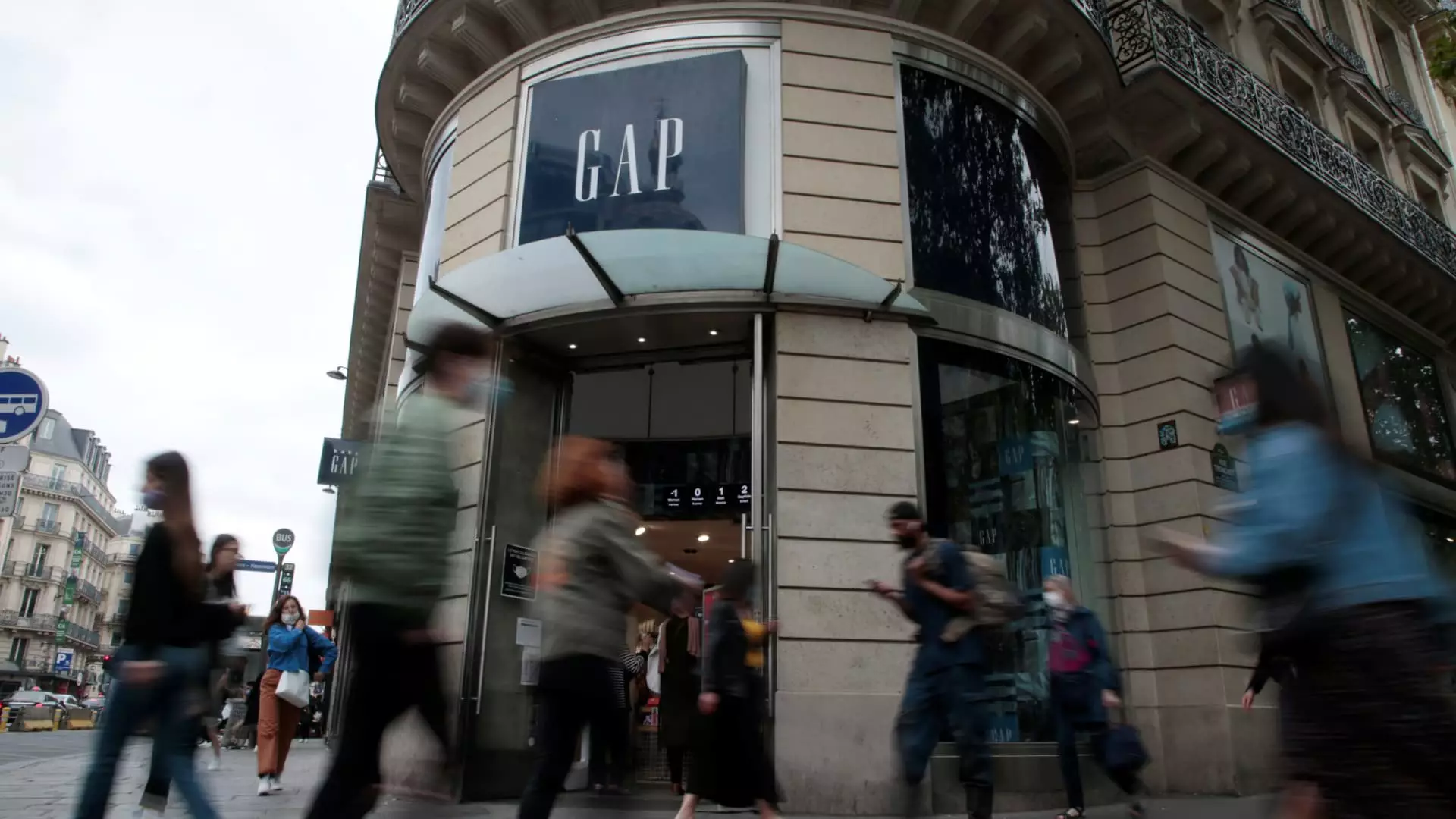Recently, Gap Inc. has found itself navigating a tumultuous sea of economic challenges stemming from new trade tariffs imposed by the U.S. government. The brand’s announcement regarding its fiscal first-quarter earnings revealed an unsettling reality: new tariffs on imports from China and various other countries could potentially strike a blow to its financial health, estimating a hefty cost of $100 million to $150 million in the wake of these duties. This impending financial hit caused a wave of pessimism, leading to a staggering 15% drop in shares during after-hours trading.
What should be particularly alarming is not merely the numerical value attached to these tariffs, but the underlying implication they carry. It represents a stark reminder of how vulnerable businesses, even major players like Gap, can be to governmental foreign policy decisions. The impact of the escalating trade war is forcing a mantle shift for Gap’s strategy, once comfortably anchored, now increasingly adrift amid geopolitical upheavals.
A Balancing Act in Business Strategy
As Gap navigates through this turbulent period, the need for strategic adaptation becomes evident. CEO Richard Dickson’s plan to mitigate these financial damages by diversifying the supply chain is a commendable and necessary step. However, the question remains whether these measures can sufficiently reverse the detrimental effects of imposed tariffs. By shifting sourcing away from China and increasing U.S. cotton procurement, Gap hopes to alleviate some of the impending financial burdens. While this is a promising direction, one cannot help but wonder if the swift changes will be enough to outpace the fallout from these tariffs.
The company’s decision to refrain from outright price increases might be viewed as a proactive approach to maintaining its market share. In theory, strong branding can withstand external pressures. However, in practice, there’s a limit to how much companies can absorb costs without passing them on to consumers—the very consumers that Gap hopes to attract amidst these hardships. As they claim that there won’t be any “meaningful price increases,” one can only take this assertion with a grain of skepticism. After all, the retail landscape is heavily saturated, and many consumers may not remain loyal in the wake of rising prices.
The Mixed Bag of Quarterly Earnings
While the projected impact of the tariffs looms ominously, there are glimmers of hope reflected in Gap’s first-quarter earnings, which surpassed expectations on both revenues and earnings per share. However, one cannot ignore that the gross margin forecast is weaker than anticipated. Expectations of a 41.8% margin, falling short of the 42.5% that analysts were counting on, indicates that the operational efficiency of Gap is under strain. It suggests that despite a revenue uptick, internal financial robustness is beginning to waver—a phenomenon that can be largely traced back to the unpredictability of the tariff landscape and the impact of shifting consumer behaviors.
Moreover, individual brand performance within the Gap portfolio reveals a broader narrative of successes and failures—specifically, the positive momentum of Old Navy versus the struggles of Banana Republic and Athleta. Old Navy’s robust sales and marketing initiatives have evidently struck a chord with consumers, a feat made all the more impressive when juxtaposed with the stagnation seen in brands like Banana Republic and Athleta. It raises questions about brand identity, marketing effectiveness, and consumer loyalty. The disparity in performance among these brands highlights not just the necessity for effective marketing but also the inherent risks of relying on multiple brands with differing market appeal.
The Future: A Fork in the Road
Looking ahead, Gap’s forecasting continues to show hesitance, with sales growth for the remainder of the year expected to hover between 1% and 2%. This cautious outlook reflects a company grappling with its ambition to reclaim market share in a demanding and ever-evolving retail sector. It’s worth contemplating whether this modest growth is an acceptable pathway or merely a signpost of stagnation. Though driven by courage and creativity, the road ahead remains fraught with uncertainties.
When faced with such realities, innovative thinking becomes indispensable. It will be interesting to see how Gap intends to navigate future potential tariffs, especially with ominous shadows looming over its significant trading partners in Vietnam and Indonesia. As they strive to rebuild their brand presence in an increasingly competitive landscape, the reliance on avoiding tariffs through diversification must not turn into an excuse for stagnation or complacency. The marketplace rewards resilience, but it can quickly punish those who fail to adapt effectively.
Ultimately, the formidable challenge of tariffs serves as a critical juncture for Gap Inc. It is indeed a test of mettle that can either lead to their evolution or mark them as a relic of the past. As they work to emerge stronger, one hopes that they won’t only survive these economic tempests but will also redefine themselves in ways that resonate more deeply with today’s consumers.

